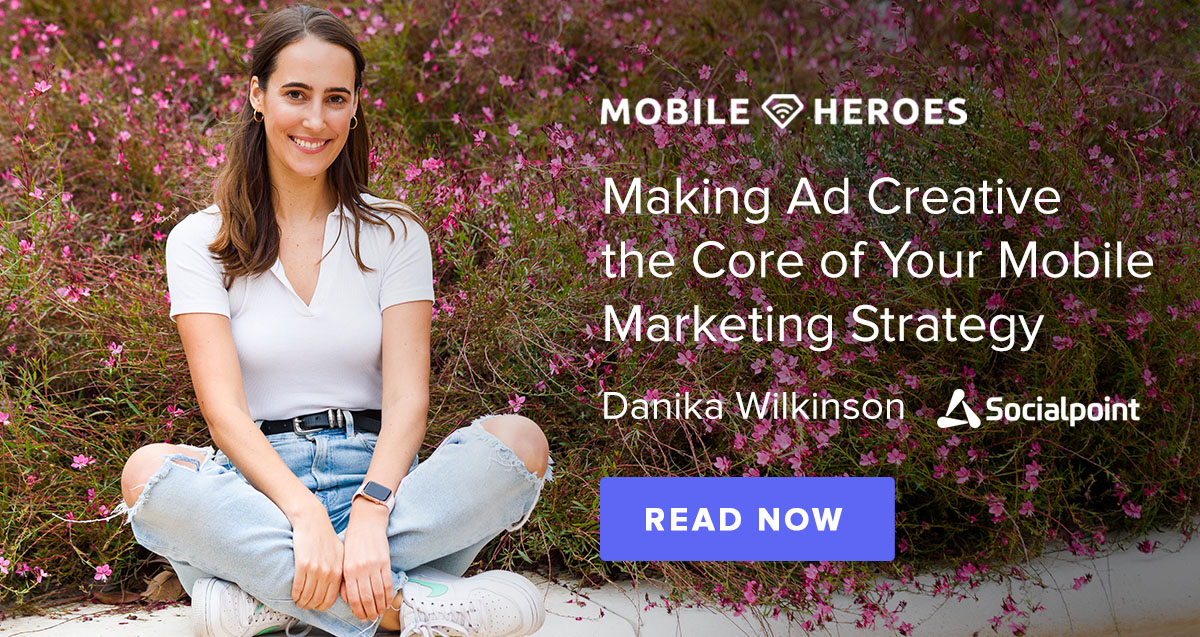Danika Wilkinson
Director of UA

Danika Wilkinson is Director of UA at Socialpoint. Originally from Australia, Danika started out as a journalist in Sydney before moving to Seville, Spain in 2014. She “fell” into mobile game marketing in 2016. Since then, she worked on a variety of titles from casual to mid-core that gained several million downloads before relocating to Barcelona in 2019. Danika currently works at Socialpoint overseeing the high-level marketing strategy for their app Word Life.
In your own words, tell us about the app(s) that you manage?
I lead marketing strategy for Word Life, a crossword-style game launched in 2019. In Word Life, players can relax and train their brains as they progress through the thousands of challenging levels and unlock different, beautiful backgrounds. The game also includes many other features such as weekly events, daily challenges, trivia, bingo, grammar quizzes and multiplayer.
How did you get started in mobile marketing?
I was offered a job at a gaming company in Seville to do community management, PR and website. It was mostly because I was a native English speaker and had a journalism background. I knew nothing about the industry at the time, but I was happy to take a job that wasn’t just teaching English!
As time went on, I found myself wearing more hats, and I eventually ended up in a user acquisition role. Before, I never considered myself a numbers person. I worked at a big gaming company, but the marketing department was small and I was mostly self-taught. After a few years however, I received an offer from Socialpoint to lead the growth of their newest game at the time, Word Life.
What do you like most about mobile marketing?
My favorite thing about mobile marketing is that it’s a little like paint by numbers—it’s super creative, but numbers-driven at its core. I love using both sides of my brain to innovate and brainstorm. Of course, we ensure everything we do is backed up and reflected by hard data. There’s something enjoyable about seeing a creative idea positively impact LTV, retention or ROI and being able to prove your contribution in a quantifiable way. I also feel fortunate that my job focuses on marketing something that’s designed to be fun!
What does it take to succeed in mobile marketing?
Mobile marketing can seem intimidating at first, especially for marketers who come from a more traditional background. You’re expected to justify and prove everything with data, and often there are technical and complex concepts even experienced mobile marketers may struggle to get their head around. Whenever I feel stuck, I say to myself, “figure it out.” I’m a firm believer that there’s nothing that can’t be learned—and the internet and mobile marketing forums offer endless resources. Also, in a new industry like mobile marketing, your colleagues and account managers don’t have all the answers either. It’s up to you to learn it on your own. It can feel quite “pioneering” in that regard.
What strategies work best to convert installs into engaged app users?
Excellent creative is the key to success in mobile game marketing, but it’s also one of the biggest pinch points when it comes to player retention and engagement. Everyone knows you need simplistic but clickbait-y advertising to increase conversion and auction efficiency (think of the famous “fail” creatives spawned by Gardenscapes and Homescapes). But when the ad doesn’t match up exactly to gameplay, you will end up with disillusioned users. We focus on integrating marketing, creative, and product teams. We believe they work better as one big unit. That’s why we take a marketing-first approach and adapt this and any new games to what works best for marketing. That way we get better conversion but also more engaged players. This means higher LTVs and a more profitable overall system in the long run.
What is one tip you can share from the past year which has made the biggest performance difference for your UA strategy?
We’ve had success incorporating features that worked in marketing creatives into the first-time user experience (FTUE) and overall gameplay. We also redesigned our entire creative framework, which has started producing positive results.
What’s your top tip when it comes to mobile ad creative?
Mobile marketing has a very low threshold for “wildcard” creatives. Everyone in your team – from the UA specialists to the artists – should feel empowered to access and analyze creative data and come up with creative learnings & hypotheses. Performance marketers can be artists and vice versa. Everyone should understand the end-to-end process—from ideation to development, to testing, and finally, to successful live campaigns.
What advice can you offer to help marketers combat mobile ad fraud?
Find yourself a really good fraud protection tool (i.e. Appsflyer 360 protect). Insist that your partners agree on recommended fraud thresholds in the contract negotiations.
What are your top 3 go-to resources for keeping up with the mobile ad tech industry?
My go-to resources are:
- Mobile Dev Memo
- Slack groups such as Mobile Heroes and UA Society
- Maintaining a great relationship with our partners



